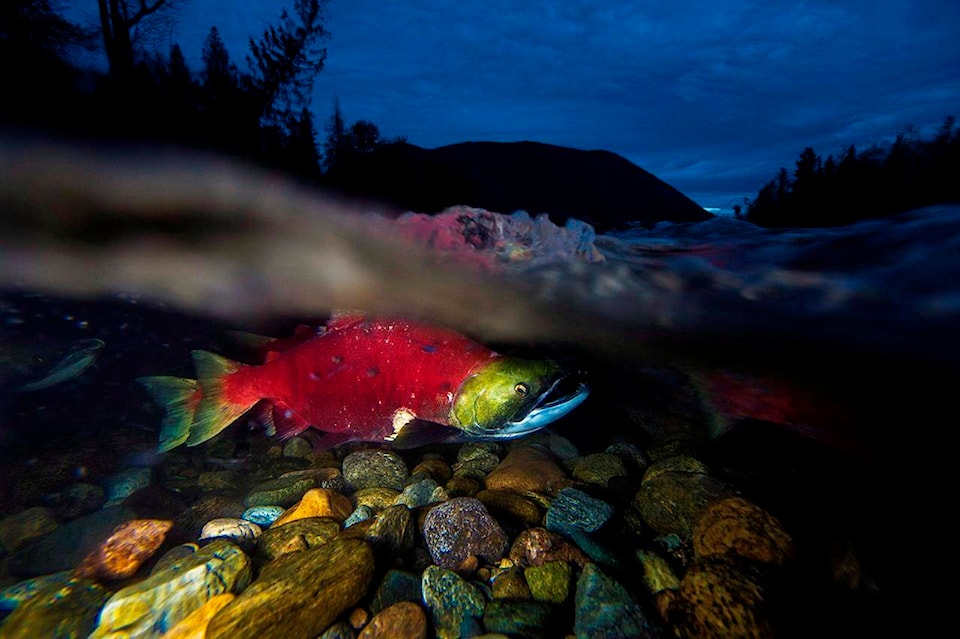The Department of Fisheries and Oceans says nine pathogens from farmed salmon in British Columbia’s Discovery Islands pose a minimal risk to wild salmon, based on its scientific assessments.
It said Monday the department will consult with seven First Nations on the islands, which are near Campbell River, in deciding whether to renew the licences of area fish farms before they expire in December.
Meetings with the First Nations, which have raised concerns about three salmon farms, are expected to begin in October.
Jay Parsons, the department’s director of aquaculture, said the risk of the viruses transferring from farmed to wild stocks in the Fraser River is less than one per cent.
The federal government has been conducting a series of assessments based on a recommendation from an inquiry into dwindling salmon stocks in the Fraser River.
Inquiry commissioner Bruce Cohen said in his final report in 2012 that salmon farms along the sockeye migration route in the Discovery Islands could potentially introduce exotic diseases and aggravate endemic disease that could affect sockeye.
He recommended that the Fisheries Department put a freeze on net-pen salmon farm production on the islands if it could not confidently say by Thursday that the risk of serious harm to wild stocks is minimal.
Fisheries Minister Bernadette Jordan said a promise by the Liberal party before the 2019 election to transition from open-net salmon to another system of salmon farming by 2025 is in the works and the studies on the nine pathogens are part of that process.
However, she did not commit to whether a new system would be in place by 2025 beyond developing a plan for it.
Jordan said four weeks of consultation will be done with the seven First Nations in the Discovery Islands.
“These particular farms may not be a good fit in this location for the First Nations communities, so we want to make sure that we consult with them to see what it is that they see as the best path forward,” she said.
Conservation groups including Living Oceans and the Watershed Watch Salmon Society criticized the Department of Fisheries and Oceans for not doing an assessment of sea lice. That suggests the department did not fully fulfil the recommendation in the Cohen report, even after eight years, the Watershed Watch Salmon Society said in a statement.
Jordan said the department has made changes based on the available science and aims to increase salmon stocks while restoring more habitat.
“There are a number of things that are impacting the wild Pacific salmon stock,” she said, adding that includes climate change. “There is no one silver bullet that’s going to deal with the challenges that we’re seeing.”
Chief Clint Williams of the Tl’amin First Nation, one of the seven that the Fisheries Department will be consulting, said he has not heard about any meetings with federal officials.
Williams said that as part of a joint fisheries committee with the department, the Tla’amin would like more information on a regular basis to learn why salmon stocks have been shrinking to the point that no fish could be saved over the winter for the past three years.
“If we’re trying to manage this resource together, then I think it needs to really appear and feel that way and be moving in that direction,” he said from Powell River.
“I think when they release their science, they need to have it viewed through the First Nations’ lens as well.”
The BC Salmon Farmers Association said the findings from the assessments show that scientific research supports the way the industry operates.
“Working closely and openly with Indigenous Peoples is how salmon farmers in B.C. are working to create a shared future of economic opportunity and environmental stewardship,” it said in a statement.
Camille Bains, The Canadian Press
Like us on Facebook and follow us on Twitter.
Want to support local journalism? Make a donation here.
